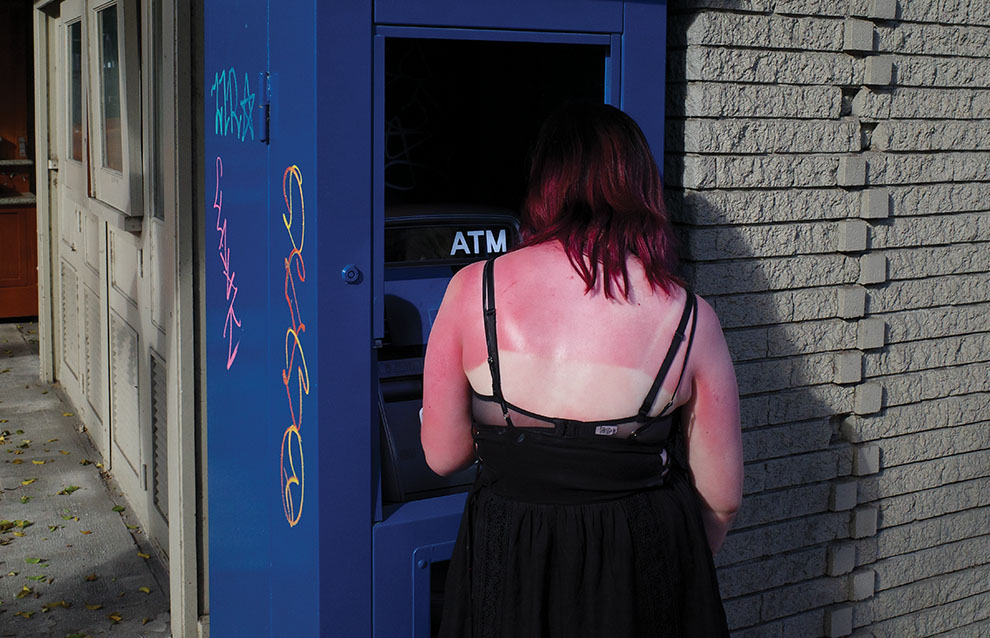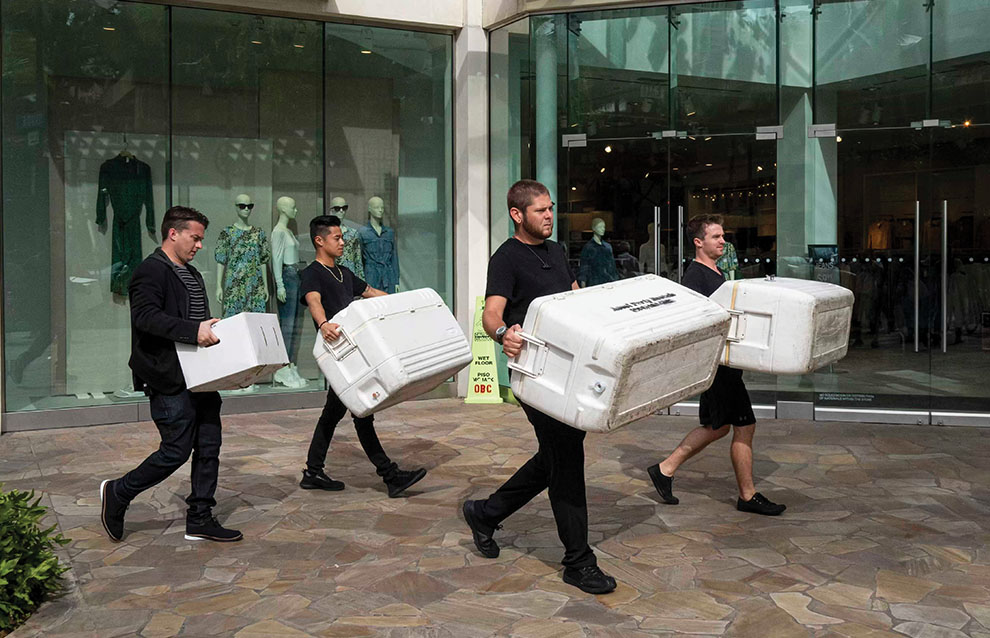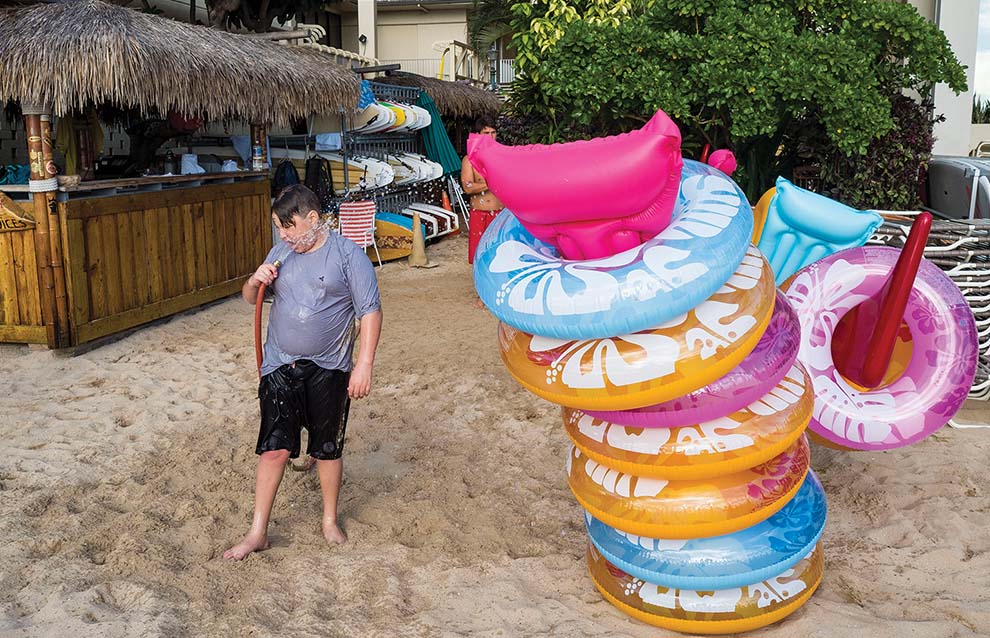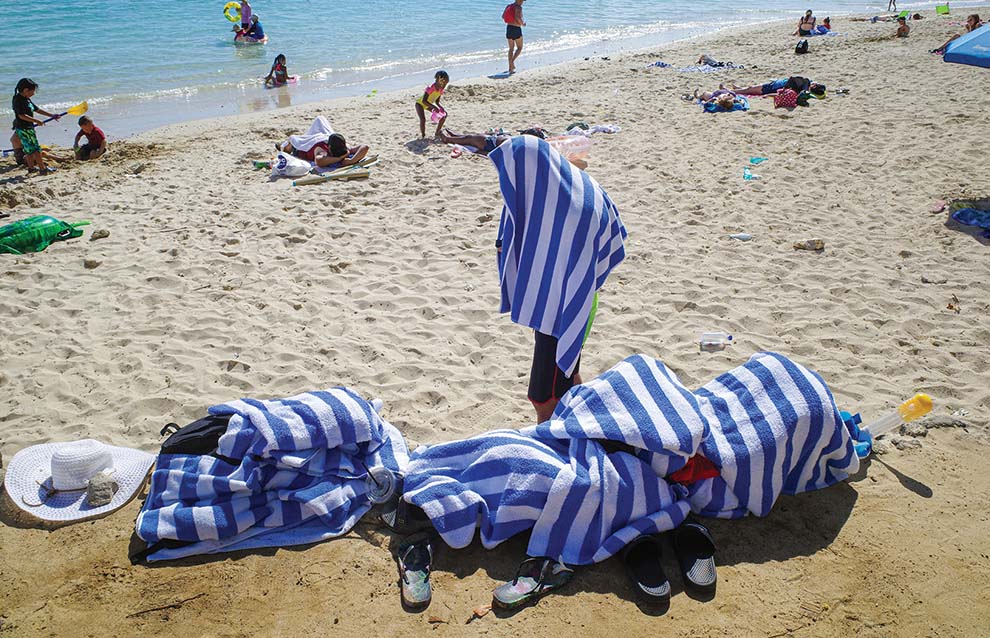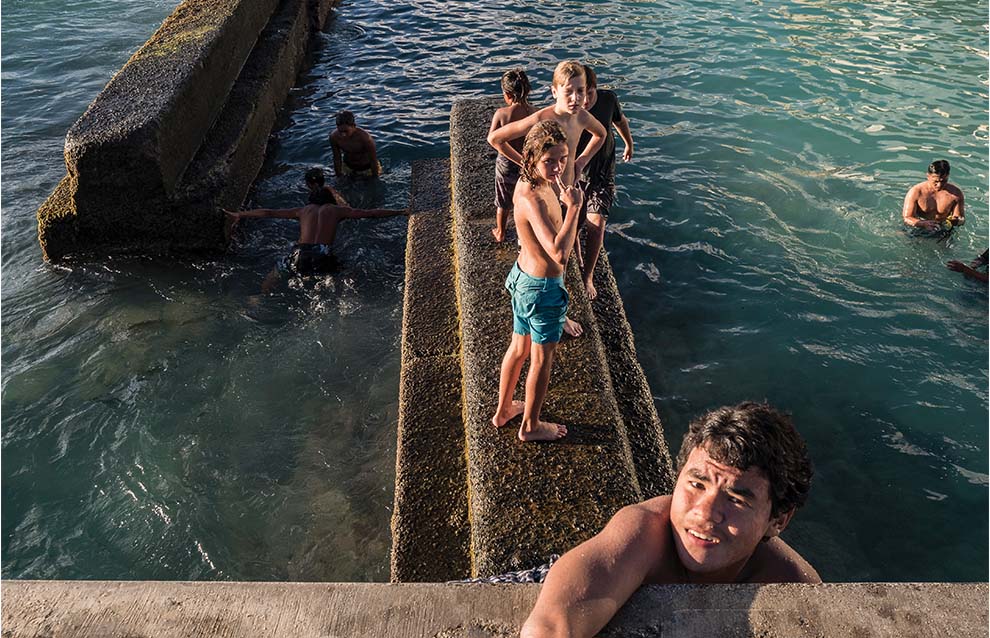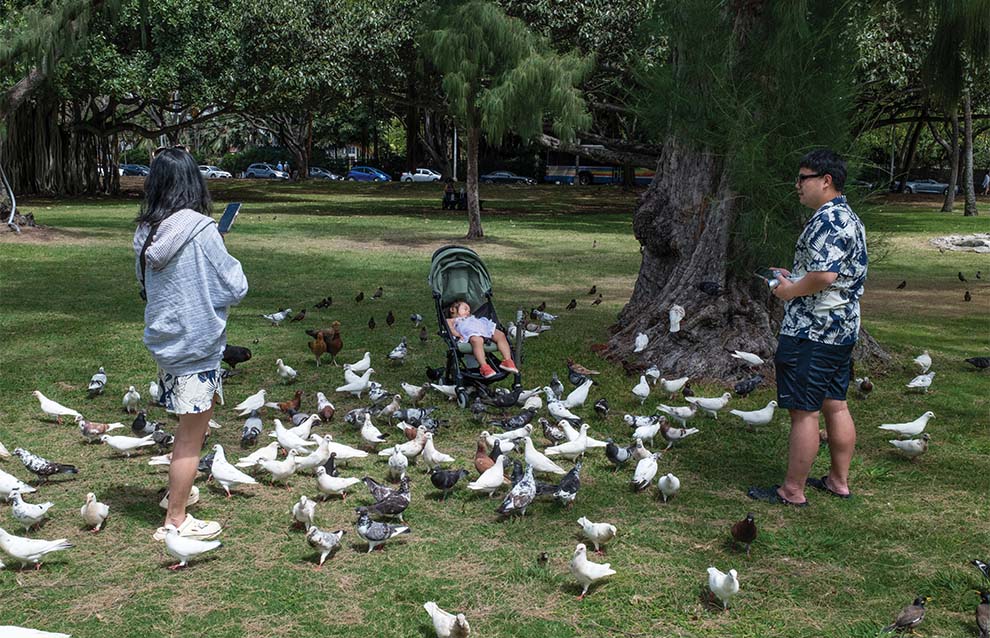Tim Huynh didn't know anything about street photography in 2010. He was interning as a video editor in Chicago when he came across the work of Vivian Meyers, whose images of New York and Chicago in 1950s and '60s were discovered in a storage locker and posted online. Meyers' "very documentary, candid street photography style was inspiring," says Huynh. "I thought, 'This looks easy. I have my camera, I'm in Chicago ... I can do this.'" Not so easy after all: People don't always take kindly to camera-toting randos, as he discovered the next day. "It was so hard to do photography in public without permission," he says. "I didn't know what I was doing, but I enjoyed the challenge."
Huynh returned home to Oahu, where he was born and raised, and found that there wasn't much out there in the way of Hawaii street photography. So he roamed Chinatown and Waikiki, places with high foot traffic and a plethora of weird, where a budding street photographer might blend in well enough to shoot on the downlow. He found both color and cover in Waikiki, where someone snapping away with a camera isn't unusual. "It's a special place—the different characters, the tourists, locals ... there are a lot of options."
Through the quiet of the pandemic, when locals recaptured one of the world's most visited beaches, to the return of tourists with their floaties and radiant sunburns, Huynh has wandered Waikiki's streets and strands for his ongoing street photography project.
